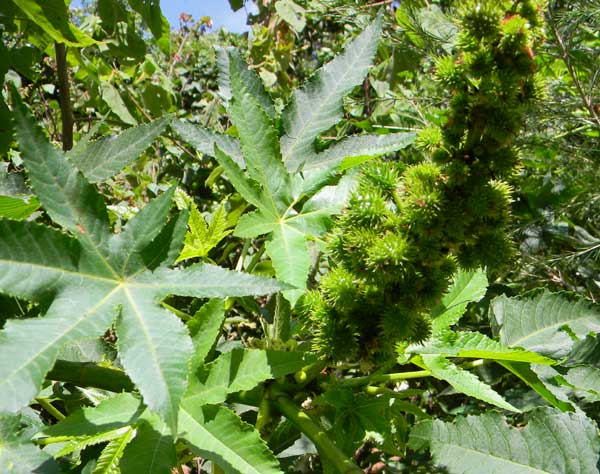Castor Oil Plant
Ricinus communis

Herbaceous plant about 3 m tall, probably grown as an ornamental, at Naiberi River Camp, Rift Valley, Kenya, Africa. November 2010. Blooming is complete here and the fruits are developing.
SHRUBBY: Herbaceous above, but becomes woody and tree like below as the
plant ages. Plants several meters tall are not uncommon.
FLOWERS: The flowers are of two kinds, male and female. Within a spike
of numerous flowers, the males are lower on the stem and have abundant
yellowish-white stamens. There are no petals. The larger green flowers higher
on the spike have conspicuous red stigmas when blooming and then give rise to
spiky fruits each of which contain usually three seeds.
LEAVES: Smooth, often shiny leaves are large with 7 to 11 radiating
triangular lobes. The margins are sharply serrated. Leaves turn reddish with
drought or cold.
RANGE: This plant is native to the Mediterranean region and eastern
Africa. It has been cultivated throughout tropical and subtropical areas.
FRUIT: Each fruit capsule has three compartments containing one large
seed, sometimes incorrectly refereed to as a bean.
UNARMED. The seed containing fruits are covered with rather sharp
prickles. In addition the plant is well known for its toxic properties.